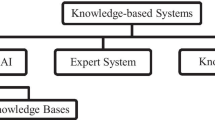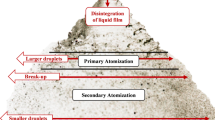Abstract
Ultrasound (US) is an effective technology to inactivate vegetative microorganisms in foods. In this study, the effect of amplitude levels (0.4, 7.5, and 37.5), duty cycles (0.3:0.7 s, 0.7:0.3 s, and 0.9: 0.1 s) and time (0, 2, 4, 6, 8, 10, 12, and 14 days) of US on inactivation of Staphylococcus aureus were investigated. In addition, genetic algorithm-artificial neural network (GA-ANN) and adaptive neuro-fuzzy inference system (ANFIS) models were used to predict inactivation of S. aureus. The GA-ANN and ANFIS were fed with three inputs of amplitude levels, duty cycles, and time. The inactivation rate of S. aureus was increased by increasing the amplitude levels, and the best inactivation was obtained at a 37.5 μm amplitude for which the S. aureus population was reduced to 2.59 CFU/mL. The high inactivation of S. aureus was achieved under a duty cycle of 0.7:0.3 s with reduction of the population to 1.49 CFU/mL. The developed GA-ANN, which included 17 hidden neurons, could predict the S. aureus population with a coefficient of determination of 0.986. The overall agreement between ANFIS predictions and experimental data was also very good (R 2 = 0.979). Sensitivity analysis results showed that the amplitude level was the most sensitive factor for prediction of S. aureus.









Similar content being viewed by others
References
Adekunte A, Valdramidis VP, Tiwari BK, Slone N, Cullen PJ, Donnell CPO, Scannell A (2010) Resistance of Cronobacter sakazakii in reconstituted powdered infant formula during ultrasound at controlled temperatures: a quantitative approach on microbial responses. Int J Food Microbiol 142:53–59
Ananta E, Voigt D, Zenker M, Heinz V, Knorr D (2005) Cellular injuries upon exposure of Escherichia coli and Lactobacillus rhamnosus to high-intensity ultrasound. J Appl Microbiol 95:271–278
Awad T, Moharram H, Shaltout O, Asker D, Youssef M (2012) Applications of ultrasound in analysis, processing and quality control of food: a review. Food Res Int 48:410–427
Bahramparvar M, Salehi F, Razavi SMA (2014) Predicting total acceptance of ice cream using artificial neural network. J Food Process Preserv 38(3):1080–1088
Bermudez-Aguirre D, Corradini MG, Mawson R, Barbosa-Canovas GV (2009) Modeling the inactivation of Listeria innocua in raw whole milk treated under thermo-sonication. Innov Food Sci Emerg 10:172–178
Chemat F, Khan MK (2011) Applications of ultrasound in food technology: processing, preservation and extraction. Ultrason Sonochem 18:813–835
Cheroutre-Vialette M, Lebert A (2002) Application of recurrent neural network to predict bacterial growth in dynamic conditions. Int J Food Microbiol 73:107–118
Demirdoven A, Baysal T (2008) The use of ultrasound and combined technologies in food preservation. Food Rev Int 25:1–11
Esteve MJ, Frigola A (2007) Refrigerated fruit juices: quality and safety issues. Adv Food Nutr Res 52:103–139
Fernandes FC, Rigden DJ, Franco OL (2012) Prediction of antimicrobial peptides based on the adaptive neuro-fuzzy inference system application. Pept Sci 98(4):280–287
Joyce E, Al-Hashemi A, Mason TJ (2007) Assessing the effect of different ultrasonic frequencies on bacterial viability using flow cytometry. J Appl Microbiol 110:862–870
Kiang WS, Bhat R, Rosma A, Cheng LH (2012) Effects of thermosonication on the fate of Escherichia coli O157:H7 and Salmonella Enteritidis in mango juice. Lett Appl Microbiol 56:251–257
Koda S, Miyamoto M, Toma M, Matsuoka T, Maebayashi M (2009) Inactivation of Escherichia coli and Streptococcus mutants by ultrasound at 500 kHz. Ultrason Sonochem 16:655–659
Lou W, Nakai S (2000) Application of artificial neural networks for predicting the thermal inactivation of bacteria: a combined effect of temperature, pH and water activity. Food Res Int 34:573–579
Mason TJ (2007) Sonochemistry and the environment – providing a “green” link between chemistry, physics and engineering. Ultrason Sonochem 14:476–483
Oonmetta-aree J, Suzuki T, Gasaluck P, Eumkeb G (2006) Antimicrobial properties and action of galangal (Alpinia galanga Linn.) on Staphylococcus aureus. Food Sci Technol 39(10):1214–1220
Patil S, Bourke P, Kelly B, Frias JM, Cullen PJ (2009) The effects of acid adaptation on Escherichia coli inactivation using power ultrasound. Innov Food Sci Emerg 10:486–490
Piyasena P, Mohareb E, McKeller RC (2003) Inactivation of microbes using ultrasound: a review. Int J Food Microbiol 87:207–216
Raso J, Pagan R, Condan S, Sala FJ (1998) Influence of temperature and pressure on the lethality of ultrasound. Appl Environ Microbiol 64(2):465–471
Rodgers SL, Ryser ET (2004) Reduction of microbial pathogens during apple cider production using sodium hypochlorite, copper ion, and sonication. J Food Prot 67:766–771
Rumelhart DE, Durbin R, Golden R, Chauvin Y (1994) Backpropagation: theory, architectures, and applications backpropagation: the basic theory. Lawrence Erlbaum Associates, New Jersey, pp 1–34
Sango DM, Abela D, McElhatton A, Valdramidis VP (2014) Assisted ultrasound applications for the production of safe foods. J Appl Microbiol 116:1067–1083
Soleimanzadeh B, Hemati L, Yolmeh M, Salehi F (2014) GA-ANN and ANFIS models and Salmonella enteritidis inactivation by ultrasound. J Food Saf. doi:10.1111/jfs.12174
Tsukamoto I, Yim B, Stavarache CE, Furuta M, Hashiba K, Maeda Y (2004) Inactivation of Saccharomyces cerevisiae by ultrasonic irradiation. Ultrason Sonochem 11:61–65
Ugarte-Romero E, Feng H, Martin SE (2007) Inactivation of Shigella boydii 18 IDPH and Listeria monocytogenes Scott A with power ultrasound at different acoustic energy densities and temperatures. J Food Sci 74(4):103–107
Yolmeh M, Habibi-Najafi MB, Salehi F (2014a) Genetic algorithm-artificial neural network and adaptive neuro-fuzzy inference system modeling of antibacterial activity of annatto dye on Salmonella enteritidis. Microb Pathog 67–68:36–40
Yolmeh M, Habibi-Najafi MB, Farhoosh R, Salehi F (2014b) Modeling of antibacterial activity of annatto dye on Escherichia coli in mayonnaise. Food Biosci 8:8–13
Author information
Authors and Affiliations
Corresponding author
Rights and permissions
About this article
Cite this article
Soleimanzadeh, B., Amoozandeh, A., Shoferpour, M. et al. New approaches to modeling Staphylococcus aureus inactivation by ultrasound. Ann Microbiol 68, 313–319 (2018). https://doi.org/10.1007/s13213-015-1067-4
Received:
Accepted:
Published:
Issue Date:
DOI: https://doi.org/10.1007/s13213-015-1067-4




